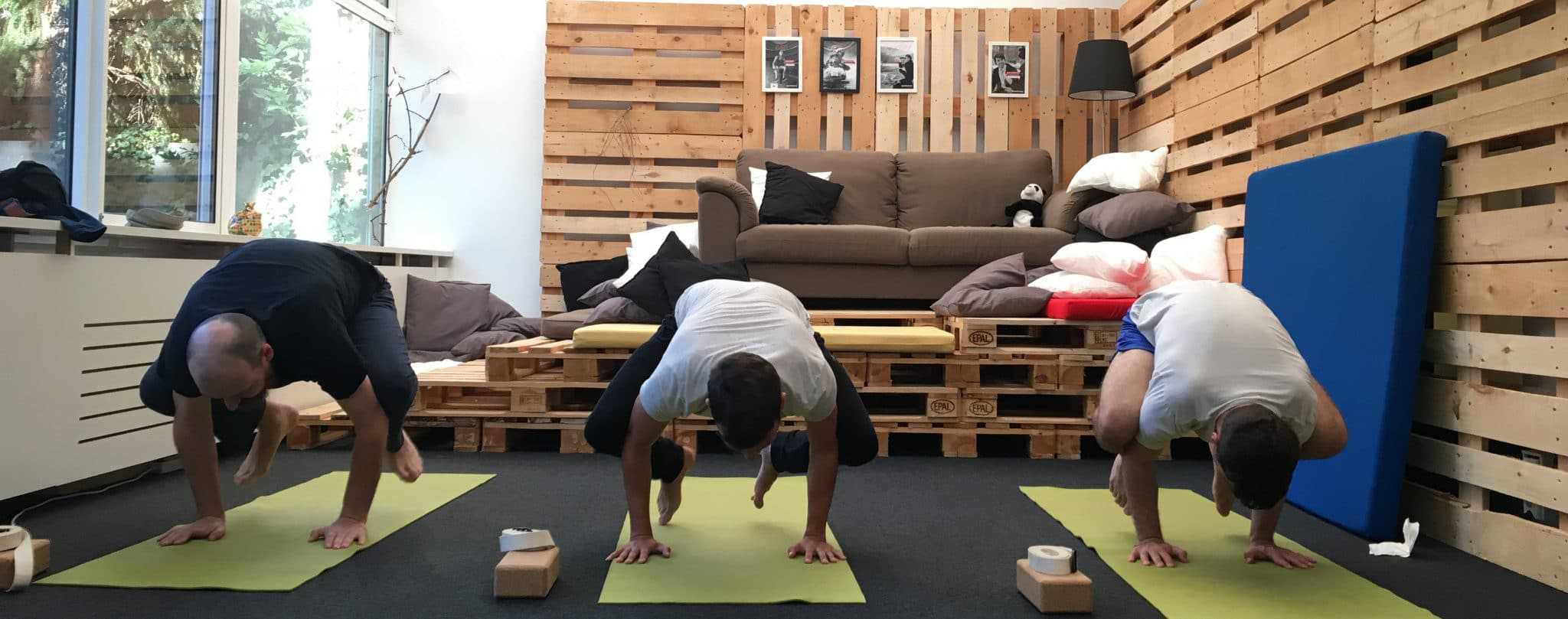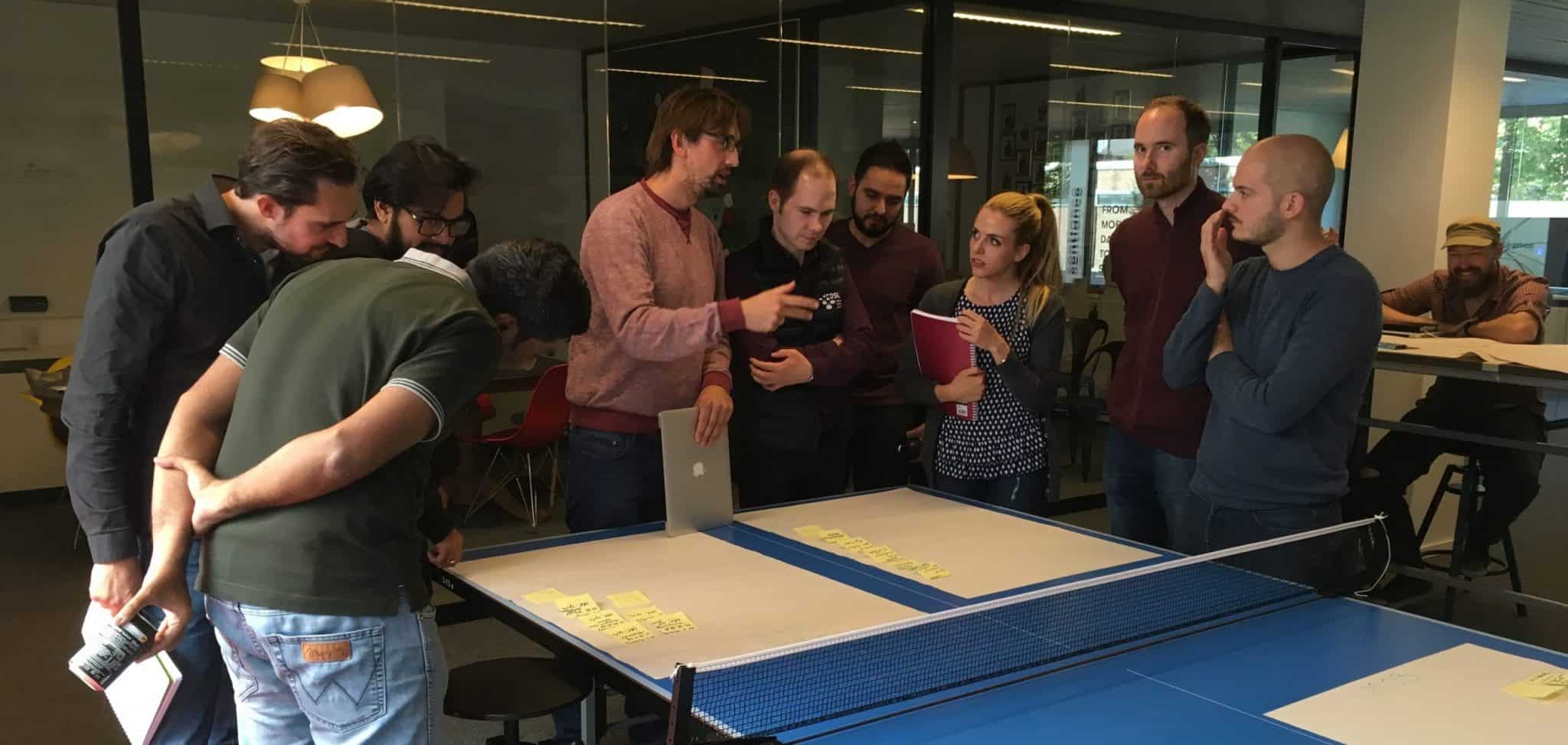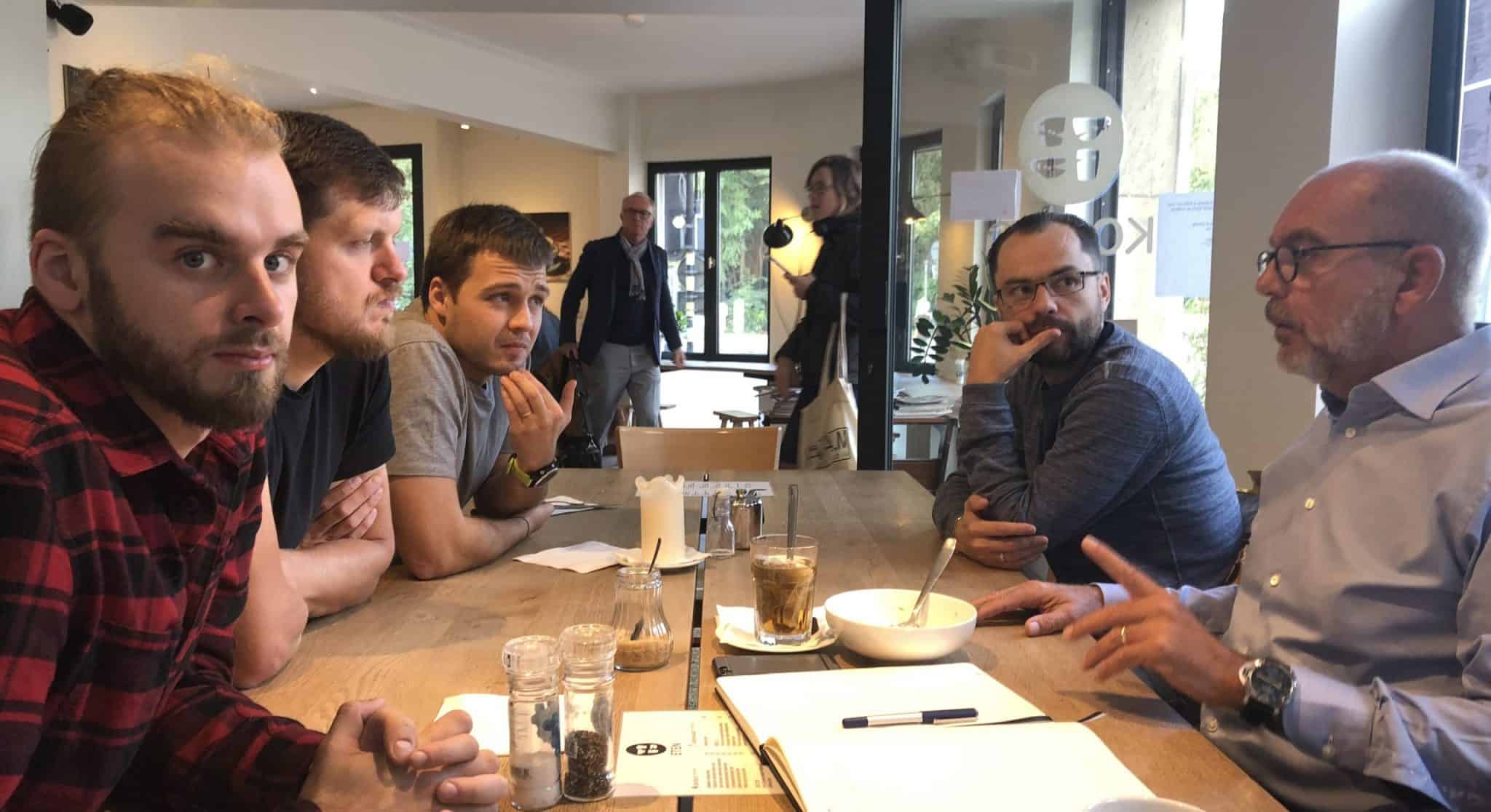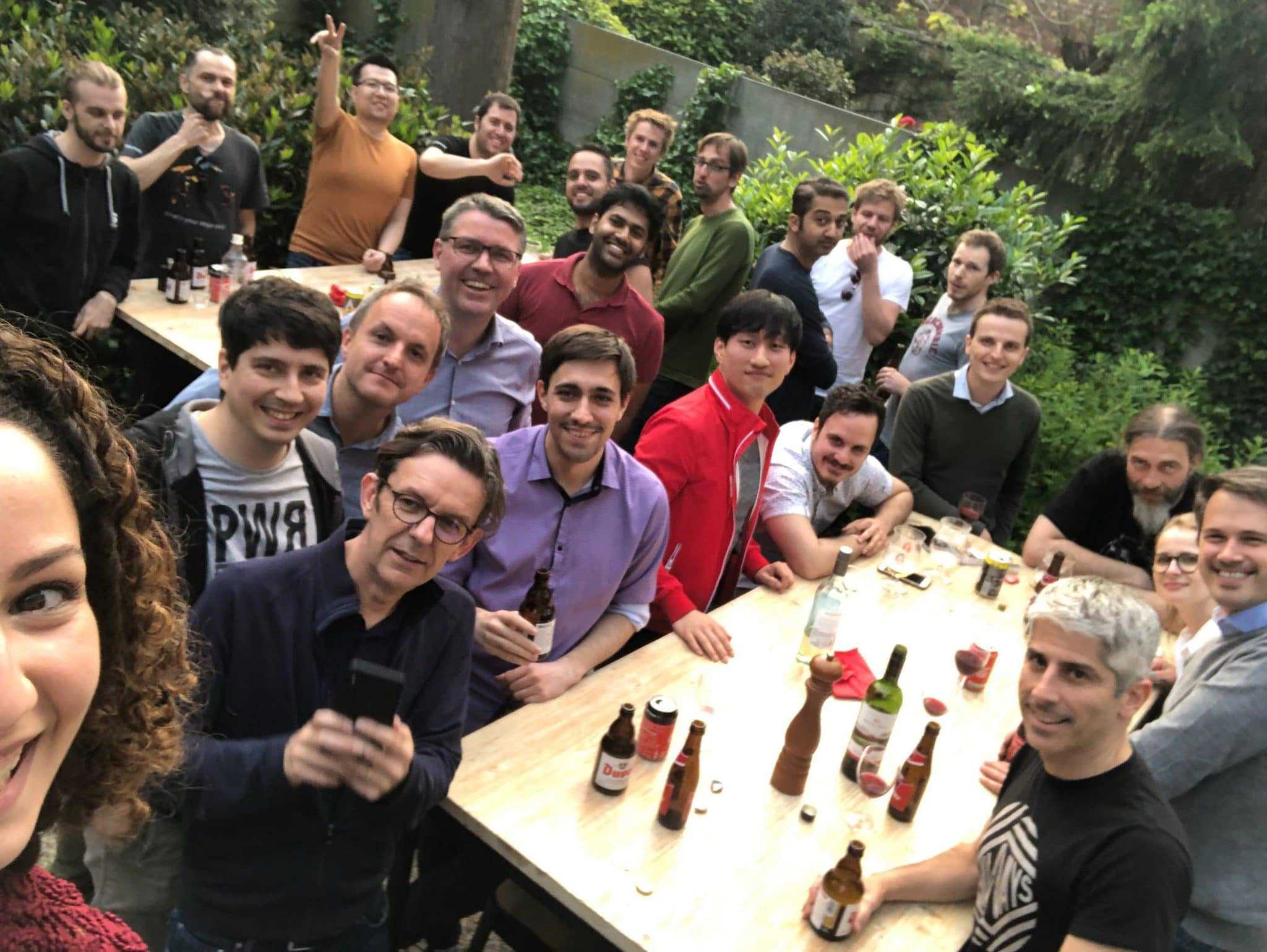Algorithm: a process or set of rules to be followed in calculations or other problem-solving operations
Culture: the set of shared attitudes, values, goals, and practices that characterizes an institution or organization
We talk a lot about what we do here at Sentiance, how we do it and why we believe it matters, but in this post, we discuss who we are, how we work, and why each of us chooses to be part of the Sentiance team.
Every company has values. Often buzz words are hung up on walls, accompanied by a photograph of a team dressed in hoodies, beaming with the excitement of growth. At first glance, we are no different. Openness. Curiosity. Grit. Integrity. These adorn the walls of our offices.
At our Antwerp headquarters, we have the requisite ping pong table, beer fridge, endless coffee, community meal on Wednesday, nuts and fruit, and a billiards table so retro only the Flemish know how to play. A wall of ‘mugshots’ introduces the visitors to our team, where our SVP Engineering goes by Darth Vader and our beloved Office Manager is known as Yazz.
Our Vilnius team doesn’t wear shoes in the office and Goku, the office dog oversees their code: Toronto has a beanbag for an emergency nap. But these are all totems, a tongue in cheek visualization of the Sentiance spirit. To gain real insight, it’s important to go beyond the code of fringe benefits.
It begins with how we build our team. We search the world over to bring the best fitted to Sentiance, for those with the grit to pursue their discipline (whether it’s data engineering, data science, design, mobile development, infrastructure, full-stack, project management, business development or behavioral change) at the highest level. We want those who are not only satisfied with code, but who are curious to see the impact their development has beyond the screen.
Like most tech companies, we test our candidates with scenarios that resemble the work they’ll be doing; it’s not uncommon for our hiring managers to spend a few hours reviewing each candidate’s results, and we find our best candidates enjoy the intellectual opportunity to put their skills to the test.
But it’s not only about the technical side, we believe in cultural fit. We didn’t always but now know those who will succeed here are commercially focused and committed to our long term vision. They are not just here for the swag. Being part of a scale-up isn’t what drives them, it’s being part of Sentiance. And that means caring about the integrity of personal data management and ensuring our contextual intelligence improves people’s life.
We look for those who are able to communicate openly, in a fact-driven manner. We take in those who understand the importance of structure but who push past hierarchy to question and to dissent. We want those who are proactive and lead by doing.
And it’s generally acknowledged by our tech team that the hardest skills of all are the soft ones, which is why a member of the People team also interviews each candidate during the interview process.
Every quarter we run an engagement survey. Ask everyone here what they love most about Sentiance and it isn’t Duvel on Fridays, it’s the quality and level of the people, and that we are doing something innovative and well, cool. And if there is more to say in that survey, rest assured our CEO takes the time to read every comment and often responds.
Our values work in service to our clients. We aspire to a proactive and open dialogue with our customers, whether that takes the form of a dedicated Slack channel, or a weekly check-in with our software engineers. Our clients’ problems are ones we are curious about solving, and one look at the busy Slack traffic on a Saturday night demonstrates the level of grit our team has in ensuring minimal disruption to our users.
We have even abandoned the fashionable nomenclature of ‘agile’ or ‘scrum’ and given up on replicating a particular company’s squad model, in order to bring our team closer to our clients. Instead, we have cross-functional client core teams made up of a data scientist and a few machine learning engineers or data engineers who collectively share ownership for a portfolio of clients, supported by our client delivery team.
They work autonomously and have agile habits. Even our more internal-facing teams participate in case study based client workshops where we cover typical client scenarios, best practices, and offer a little (often humorous) practice on client communication and emotional intelligence.
We run a monthly Curiosity Workshop series, where internal experts share knowledge and learning. This year’s curriculum included how the business development team qualifies leads, the science behind behavioral change and ethical AI.
Combined with our quarterly town hall sessions and demo days, we try to keep communication flowing. And if that isn’t enough, we’ll run CEO breakfasts (a little Q&A with your eggs?), or our VP People serves as our resident coach if you still can’t get an answer, provided your question has nothing to do with random forests or Kubernetes. She will even follow you around for a week if that’s what you need to figure out what you can do better.
We are growing here at Sentiance and that can often mean more processes (or if there isn’t one, time to create one). This can, in turn, mean more bureaucracy. Our People function follows the philosophy of agility and rapid prototyping. As a consequence, we’ve stripped down a lot of the traditional HR processes to their bare necessities, enough to ensure fairness and a level of transparency, not so much that our team is bogged down on ratings and rankings- subjectivity disguised as metrics.
At the core of our performance development is a quarterly talent review we call the Moving Right Review. Each functional lead prepares a snapshot of the performance of his team, considering three dimensions: results, technical mastery, and behavior.
Results refer to the client or roadmap work being delivered as needed, taking into account quality and speed. Technical mastery refers to the technical skill maps we’ve created for nearly every role in the organization, and behavior- well, this references our InteGRITy index, a list of expected behaviors for everyone at Sentiance. That list comes in a front end version and a back end version, for those who need a little more explicit guidance.
The Moving Right Review considers those who are meeting expectations, those who are up and coming, ready and able, or need a little more support. This is calibrated among all the functional leads - a process adopted from Google - to reduce bias.
The goal is to ensure an ongoing thoughtful discussion among the management on someone’s development, trajectory, and needed feedback. We use this approach whether you’re in marketing, business development or design.
These discussions form the basis of our compensation, promotion, and quarterly check-ins. We are always searching for lean tools to support healthy manager check-ins, 360 feedback, and recognition.
We are finding less is more and knowing exactly what we want to achieve with our people connections are central to making our processes effective. Of course, the team would like things even leaner and we’ll keep pruning.
Openness. Curiosity. Integrity. Grit. These are four of our five values. They work in service to our clients and also to our team. But these values alone are not distinct without the cornerstone and context of our fifth value: a bit of weirdness. How else to explain 25 different nationalities, 7 different offices and a team where 75% is technically focused?
Every month our Weird and Wonderful series highlights that we fit in our misfit. Whether it’s an evening of Exploding Kittens and Werewolves, team events involving uncooked spaghetti and raw eggs or pumpkin carving, we believe that even if the introvert can’t say good morning until finishing his third coffee at 11:30, we’re a better team when that same person hangs around for a game of Dilemmerama, explaining if he prefers to smell like used socks or sweat olive oil for the rest of his life.
A little bit of weirdness is the platform upon which we work. Because it’s only when someone is curious enough and has the grit to ask that slightly weird question- and the receiver has the integrity and openness to really consider that question, that Sentiance propels forward.
So that’s us. Of course, there is more to do. We’d love more diversity (more STEM for women!), we have to foster stronger connections with our distributed teams, and as we scale we’ll eventually need to bring in teams where Python isn’t the lingua franca.
There is no playbook for the work we’re doing at Sentiance and there’s no playbook for how our team will tackle the added complexity of growth. We’ll evolve as our needs change and just as we do with our data, we’ll keep digging for insight. Because for all the spaceships, reactive time travel, ping pong tables, and decision trees, at the root of it all are our people and values that enables Sentiance to do what it does today.









